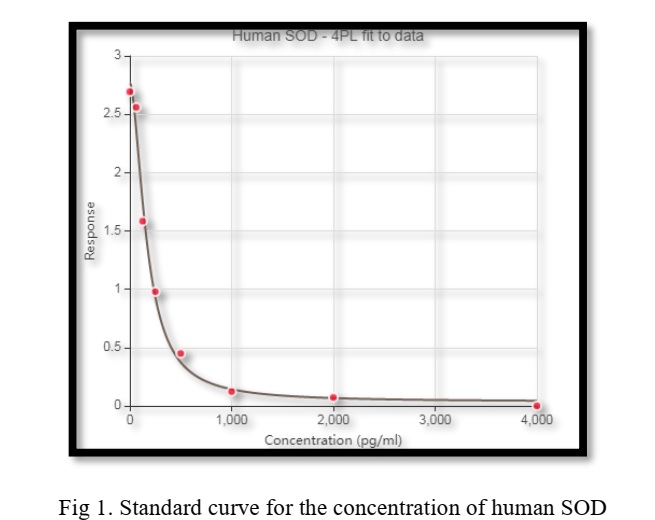Assessment of Some Biochemical Parameters in Iraqi Women with Recurrent Miscarriage
DOI:
https://doi.org/10.51173/jt.v4i33.850Keywords:
Miscarriage, Calcium, Hypocalcaemia, Zinc, SOD, MDAAbstract
Miscarriage a is pregnancy loss that occurs within the first 23 weeks. The risk factors that increase miscarriage is multivariate. Spontaneous loss of a conception before the 20th week of pregnancy is known as a miscarriage. There are two types of miscarriage: spontaneous and recurrent, one or more sporadic miscarriages affects approximately 25 – 50 percent of all women. Recurrent miscarriage, on the other hand, affects about 1% of couples trying to conceive. There are a number of things that can cause a miscarriage, such as inflammatory and immune system diseases. This study aims to compare the levels of calcium, Zinc, lipid peroxidation (Malondialdehyde), and superoxide dismutase (SOD) in the serum of women who have experienced a miscarriage with those of women who are pregnant and healthy. The study included 140 blood samples of women who suffered from a miscarriage and a healthy pregnant group. Calcium and Zinc were evaluated in serum of miscarriage and healthy control group, serum Malondialdehyde MDA, an indicator of lipid peroxidation, serum SOD, antioxidant enzyme, and superoxide dismutase. The calcium concentration was low in aborted women compared with the healthy pregnant control group. Serum zinc levels were lower in women who had an abortion compared to those who were pregnant and healthy. The level of serum SOD and MDA in aborted women raveled differences significantly compared with the healthy pregnant group, a decrease in the mean level of SOD was noticed in aborted women in contrast to the healthy pregnant group. At the same time, MDA showed it enhanced among the aborted group compared with healthy delivered women.
Downloads
References
M. H. Tur-Torres, C. Garrido-Gimenez, and J. Alijotas-Reig, “Genetics of recurrent miscarriage and fetal loss,” Best Pract. Res. Clin. Obstet. Gynaecol., vol. 42, pp. 11–25, 2017.
A. Almaghamsi, M. H. Almalki, and B. M. Buhary, “Hypocalcemia in pregnancy: A clinical review update,” Oman Med. J., vol. 33, no. 6, p. 453, 2018.
T. O. Scholl, X. Chen, and T. P. Stein, “Maternal calcium metabolic stress and fetal growth,” Am. J. Clin. Nutr., vol. 99, no. 4, pp. 918–925, 2014.
A. Karimi, S. Bagheri, M. Nematy, and M. Saeidi, “Zinc deficiency in pregnancy and fetal-neonatal outcomes and impact of the supplements on pregnancy outcomes,” Iran. J. Neonatol. IJN, vol. 3, no. 2, pp. 77–83, 2012.
S. Sureshchandra, N. E. Marshall, N. Mendoza, A. Jankeel, M. Z. Zulu, and I. Messaoudi, “Functional and genomic adaptations of blood monocytes to pregravid obesity during pregnancy,” Iscience, vol. 24, no. 6, p. 102690, 2021.
A. Agarwal, S. Gupta, L. Sekhon, and R. Shah, “Redox considerations in female reproductive function and assisted reproduction: from molecular mechanisms to health implications,” Antioxid. Redox Signal., vol. 10, no. 8, pp. 1375–1404, 2008.
Y. A. Al‑Sheikh, H. K. Ghneim, A. F. Alharbi, M. M. Alshebly, F. S. Aljaser, and M. A. M. Aboul‑Soud, “Molecular and biochemical investigations of key antioxidant/oxidant molecules in Saudi patients with recurrent miscarriage,” Exp. Ther. Med., vol. 18, no. 6, pp. 4450–4460, 2019.
B. Charles and K. J. Fredeen, “Concepts, instrumentation and techniques in inductively coupled plasma optical emission spectrometry,” Perkin Elmer Corp, vol. 3, no. 2, 1997.
X.-D. Li and Q.-Z. Zhai, “Spectrophotometric Determination of Calcium with Dibromo-p-methylsulfonazo,” J. Chem., vol. 2020, 2020.
P. C. D’haese, L. V Lamberts, A. O. Vanheule, and M. E. De Broe, “Direct determination of zinc in serum by Zeeman atomic absorption spectrometry with a graphite furnace,” Clin. Chem., vol. 38, no. 12, pp. 2439–2443, 1992.
Y. Muhammad et al., “An elevated 8-isoprostaglandin F2 alpha (8-iso-PGF2α) in COVID-19 subjects co-infected with malaria,” Pan Afr. Med. J., vol. 37, 2020.
N. W. Tietz, “Textbook of clinical chemistry.(3rdedn.) WB SaundersCompany.” Philadephia, 1999.
W. Beyer, J. Imlay, and I. Fridovich, “Superoxide dismutases,” Prog. Nucleic Acid Res. Mol. Biol., vol. 40, pp. 221–253, 1991.
A. Mussa and B. Badurudeen, “Hypocalcemia in pregnancy: a clinical review update,” 2018.
L. Jafri, A. H. Khan, and S. Azeem, “Ionized calcium measurement in serum and plasma by ion selective electrodes: comparison of measured and calculated parameters,” Indian J. Clin. Biochem., vol. 29, no. 3, pp. 327–332, 2014.
J. Fong and A. Khan, “Hypocalcemia: updates in diagnosis and management for primary care,” Can. Fam. physician, vol. 58, no. 2, pp. 158–162, 2012.
J. P. M. M. Willemse et al., “Calcium intake from diet and supplement use during early pregnancy: The Expect study I,” Eur. J. Nutr., vol. 59, no. 1, pp. 167–174, 2020.
J. Osredkar and N. Sustar, “Copper and zinc, biological role and significance of copper/zinc imbalance,” J Clin. Toxicol S, vol. 3, no. 2161, p. 495, 2011.
O. O. Ajayi, M. A. Charles-Davies, and O. G. Arinola, “Progesterone, selected heavy metals and micronutrients in pregnant Nigerian women with a history of recurrent spontaneous abortion,” Afr. Health Sci., vol. 12, no. 2, pp. 153–159, 2012.
L. Prashanth, K. K. Kattapagari, R. T. Chitturi, V. R. R. Baddam, and L. K. Prasad, “A review on role of essential trace elements in health and disease,” J. dr. ntr Univ. Heal. Sci., vol. 4, no. 2, p. 75, 2015.
O. OzkayaABCDEF, M. SezikBCDE, and H. KayaABD, “Serum malondialdehyde, erythrocyte glutathione peroxidase, and erythrocyte superoxide dismutase levels in women with early spontaneous abortions accompanied by vaginal bleeding,” Med Sci Monit, vol. 14, no. 1, p. 51, 2008.
R. Aouache, L. Biquard, D. Vaiman, and F. Miralles, “Oxidative stress in preeclampsia and placental diseases,” Int. J. Mol. Sci., vol. 19, no. 5, p. 1496, 2018.
K. Duhig,L.C. Chappell,A.H Shennan Oxidative stress in pregnancy and reproduction Obstet Med. Sep; 9(3): 113–116. 2012.
Shiotani Noda Y, NarimotoK, Imai K, Mori T, Fujimoto K, et al. Immunohistochemical localization of superoxide dismutase in the human ovary. Hum Reprod.;6:1349–53. 1991.

Downloads
Published
How to Cite
Issue
Section
License
Copyright (c) 2022 Ruqaya K. Abbas, Amani M. Jasim, Qater Al-nada Ali Al-Ibady

This work is licensed under a Creative Commons Attribution 4.0 International License.
















